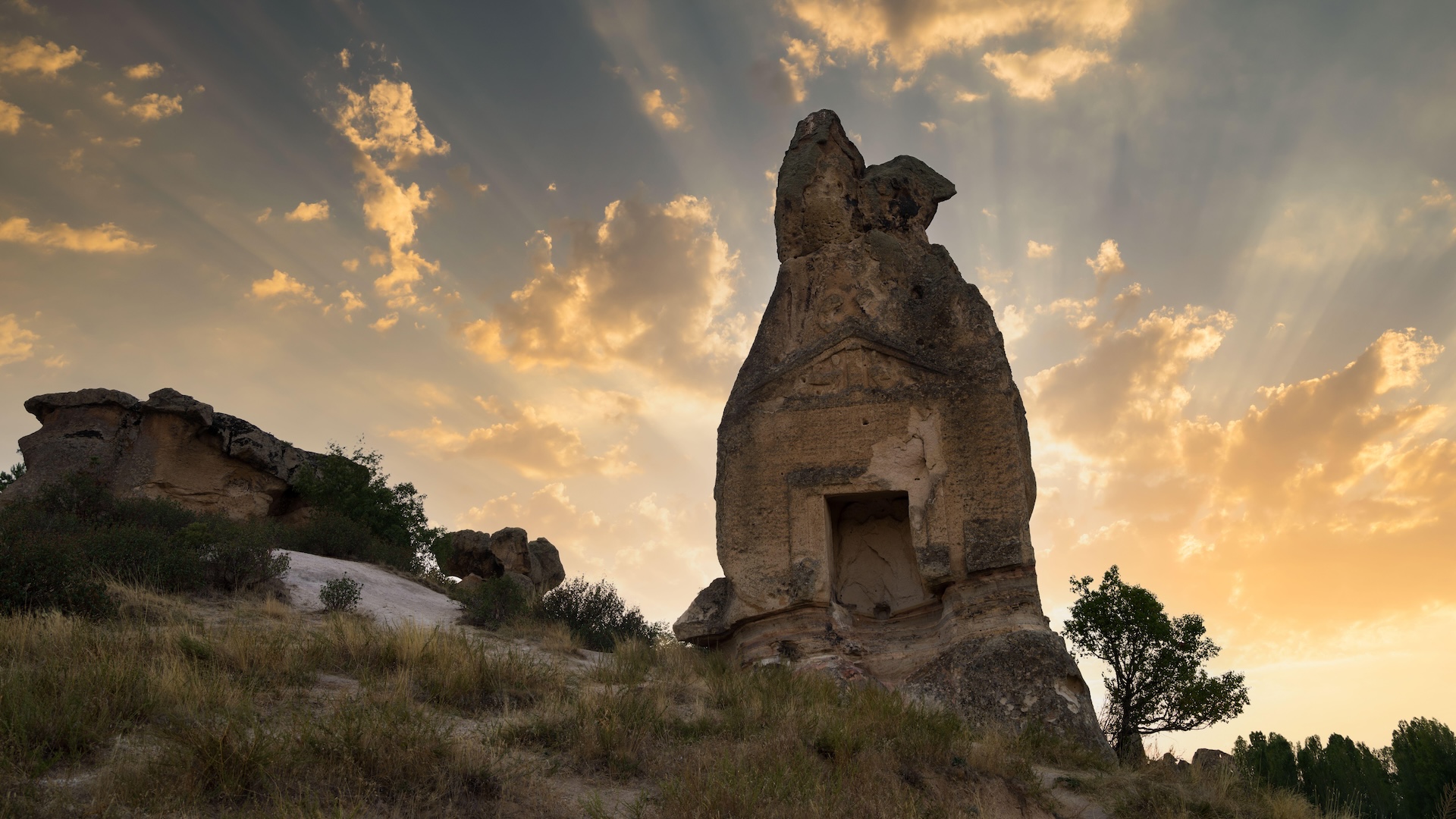
A researcher says he has deciphered an ancient, heavily damaged inscription carved on a 2,600-year-old monument in Turkey.
The monument, which is engraved with images of lions and sphinxes, is known as Arslan Kaya (also spelled Aslan Kaya), which means "lion rock" in Turkish. The inscription spells out the name "Materan," a goddess of the Phrygians, who flourished in what is now Turkey from roughly 1200 to 600 B.C. They knew her "simply as the Mother," Mark Munn, a professor of ancient Greek history and archaeology at Pennsylvania State University who wrote a paper about the inscription, told Live Science in an email.
Other ancient cultures also revered Materan. "The Greeks knew her as the Mother of the Gods," Munn said, noting that the Romans called her "Magna Mater," or "Great Mother." At the time the monument was built, a kingdom known as Lydia, which also had high regard for Materan, may have ruled the area, Munn wrote in his paper, which was published Oct. 24 in the journal Kadmos.
The monument is heavily damaged from weathering and looters, making the inscription extremely hard to read. What it says has been a source of debate since the 19th century, Munn noted in the paper. To solve the mystery, Munn photographed the inscription in detail when the light was good and reexamined older photographs and records of the inscription.
"Much depends upon the favorability of the light when photographs are taken," Munn wrote in the article, noting that the light was particularly good on the morning of April 25, 2024.
Related: Cryptic 4,000-year-old writing system may finally be deciphered
It makes sense that the monument would bear Materan's name, as it also contains an image of the goddess, Munn said. Materan's name would likely have been part of a larger inscription that explained who commissioned the inscription and who Materan was.
He also examined the monument's various stylistic details, which support the inscription's date to the first half or middle of the sixth century B.C., Munn wrote in the study.
However, Rostyslav Oreshko, a lecturer at the Practical School of Advanced Studies in France who has conducted extensive research on Phrygian inscriptions but was not involved with the research, said the work didn't offer a new interpretation.
"Munn's article in Kadmos does not propose something radically new about the inscription, it simply sets straight the reading," Oreshko told Live Science in an email. "The reading Materan, referring to the well-known Phrygian goddess, was suggested already in the 19th century," Oreshko said, noting that Munn's findings support that interpretation.
The debate over the inscription has been going on for over a century and time will tell if it is now at an end.







